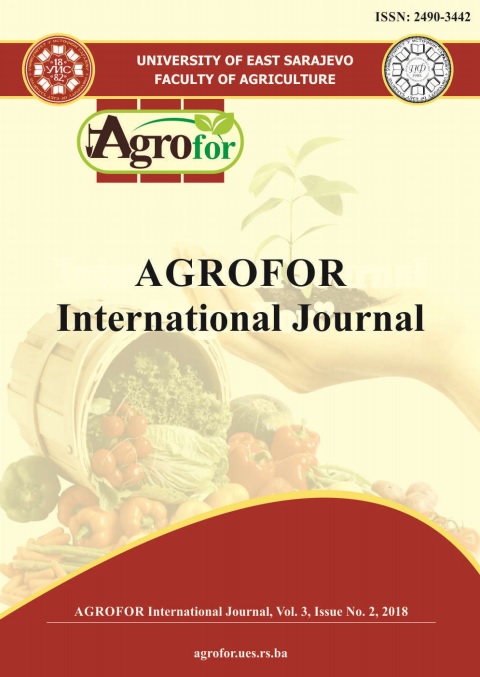IMPACT OF INSECTICIDES ON POLLINATOR POPULATIONS: ROLE OF PHYTOSANITARY PERFORMANCE INDICATORS IN TOMATO CROPS
DOI:
https://doi.org/10.7251/AGRENG1802005AAbstract
Agrochemicals are considered to be among the major environmental threats to pollinators, including honey bees. At the time of foraging, bees are at risk of exposure to phytosanitary treatment as a result of widespread treatment and their location, often near orchards. In Algeria, the majority of farmers systematically over-treat their orchards in order to have good quality fruits for as long as possible towards the use of an effective product. We evaluated the comparative effects of lambda-cyhalothrin and spinosad insecticide treatments on bees in tomato plots. Fluctuations of bee populations abundance were established during a 16 days period of exposure using yellow-colored plates with water placed every two days inside the experimental units. Bee populations showed very high sensitivity (0 individuals registered) to both insecticides at the homologated dose and even half dose during 10 days following application of the treatments. Depending on the estimated temporal toxicity of the respective products, differences in recovery of bee activity are presented. Consideration of indicators of the intensity of use of plant protection products is discussed.Downloads
Published
2018-09-14
Issue
Section
Чланци

